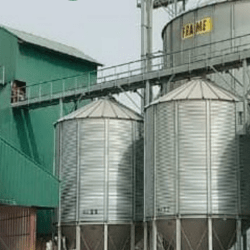Food insecurity and under nutrition remain significant challenges in Nigeria, a nation with a growing population and diverse socioeconomic issues. This article explores the key drivers of food insecurity in Nigeria, focusing on population growth, climate change, economic instability, and conflict, while offering potential solutions for sustainable progress.
Nigeria’s food insecurity is driven by interconnected factors like population growth, climate change, economic instability, and conflict. Addressing these challenges requires a multifaceted approach involving government intervention, international cooperation, and innovative agricultural practices.
Population Growth and Food Production
Nigeria, with its 201 million citizens, is Africa’s most populous country. Over the past two decades (2000–2020), population growth has outpaced food production. Despite occasional increases in agricultural output, these gains have not matched the rising demand, creating persistent food insecurity. For instance, during the 2013–2020 period, population growth slightly declined, but food production failed to grow significantly, exacerbating food shortages.
Climate Change and Its Effects
Climate change has deeply impacted Nigeria’s agriculture. Flooding, worsened by erratic weather patterns, damages farmlands and reduces harvests. The 2012 floods were Nigeria’s worst in 40 years, displacing nearly 4 million people and straining food supplies. These events continue to increase vulnerability among displaced populations, forcing reliance on the country’s limited food reserves.
Economic Growth, Inflation, and Unemployment
Economic instability contributes heavily to food insecurity. After peaking at 8% growth in 2010, Nigeria’s economy suffered a decline, reaching negative growth in 2016 before modestly recovering. Rising unemployment and high food inflation, which has averaged over 10% since 2016, make food unaffordable for many, pushing households further into poverty.

Conflict and Food Insecurity
Violence, particularly from Boko Haram, has devastated Nigeria’s food systems. Since 2009, conflicts have displaced millions, with 2014 seeing the highest number of conflict-related deaths and IDPs. Agriculture suffers immensely in conflict zones, reducing food availability and forcing more reliance on humanitarian aid.

1. What are the main causes of food insecurity in Nigeria?
Population growth, climate change, economic instability, and violent conflicts are the primary contributors.
2. How does climate change affect Nigerian agriculture?
Flooding and erratic weather patterns reduce harvests, displace communities, and strain food supplies.
3. What role does unemployment play in food insecurity?
Unemployment leads to poverty, limiting access to food and increasing reliance on aid.
4. How has conflict worsened food insecurity in Nigeria?
Violence disrupts farming, displaces millions, and reduces food availability in affected areas.
5. Are there any successful initiatives addressing food insecurity in Nigeria?
Efforts like strategic food reserves and international aid programs provide some relief, but challenges remain.
6. What is the future outlook for food security in Nigeria?
Sustainable solutions focusing on technology, climate adaptation, and policy reform hold promise for improvement.



















